In a previous post, we looked at how Carl Burgos’ original Human Torch might have been inspired by helldivers at the 1939 New York World’s Fair (Unassuming Barber Shop is all about that “might”). But you can’t talk about the Torch without his elemental counterpart: the Sub-Mariner.
There are multiple accounts of how Bill Everett created Namor for April 1939’s Motion Pictures Funnies before the character’s wider debut in Martin Goodman’s Marvel Comics #1 in October 1939. In Steranko’s History of Comics, Everett himself recounts that
Carl [Burgos] and I were quite close friends, and we usually held our story conferences very informally over a drink. We were discussing the new book in the Webster Bar and between us, whether it was his idea or mine or a combination of both, we decided on using the two elements, fire and water…
Everett cites Coleridge, the god Mercury, and even a pulpy story of himself being rescued by a mysterious man off the coast of Florida: on a boat wracked by wave and wind, Everett is about to succumb to the ocean depths, but he is miraculously saved by . . . someone. He turns around to thank the person, but THERE IS NO ONE THERE.
Steranko calls this story “slightly fictionalized.”
Like the Torch divers, Namor might have been inspired by swimmers. Or at least one of them. Principal among the “fish men” of swimming who graced the sports pages back then was a young man named Johnny Weissmuller. Johnny (so I don’t have to keep typing “Weissmuller”), was a Michigan lifeguard, born in Romania, who would go unbeaten during his entire amateur swimming career, including the Olympics in 1924 and 1928 – all on his staple diet of ice cream and coffee. Johnny also swam at the New York Athletic Club, whose team was called the “Winged Foot Men.”
Johnny would go on to become a movie star, starring in Tarzan films beginning with 1932’s Tarzan, The Ape Man. Johnny also participated in numerous traveling swim shows, culminating in Billy Rose’s Aquacade. The timing is perhaps too tight for Everett seeing Johnny at the Fair, but the swimmer’s photos and exploits were well-documented in the press. Here is what Johnny looked like, shown here alongside a blue Subby from Marvel Comics #1:
Attention eyebrows, wavy hair, pointy ears, and cheekbones. Publicity stills from Tarzan also suggest Everett’s composition in Marvel #2.
Equating Namor with the most popular swimmer of the time is kind of a slow-pitched fastball. Even if Johnny was a model for Namor, what about the elaborate aquatic setting that would so define his arrogant personality? The Fair might have had a say in that, too. One of the weirdest exhibits at the Fair was Salvador Dali’s The Dream of Venus. Nicknamed the “Surrealist Funhouse,” the whole shebang was designed by Dali (known for his pliable clocks) to represent an underwater “dream of love.” After buying tickets from an enormous fish, families and gawkers would walk between the giant legs of a woman to enter an undersea kingdom that made no sense whatsoever. Instead of the fish and fun facts that one would normally find in an aquarium-style setting, visitors saw underwater typewriters and telephones — and women wearing lobsters. It was crazy and magnificent; it was Dali.
There was plenty in the Dream to suggest Everett’s Atlantis, especially Namor’s countrymen with their large, fishlike eyes.
The Dream had branches of coral everywhere and men in clunky dark diving suits. So did Marvel Comics #1:
The heart of Dream of Venus was Venus herself, who took the form of a nude actress reclined atop a nearly forty-foot bed, dreaming of love under silken red sheets.
The rest of the installation included several “dream pools,” where live women would answer rubber telephones, milk a fake cow, and comb their hair. Philip Medicus, the New Yorker who took extensive home movies of the Fair, gives us the only real footage from inside the Dream. Medicus (who was also “a noted collector of swords”) focuses his camera almost entirely on a single woman (which he did a lot in his movies), but the asthetics of the Dream — hazy, underwater, undulating — look very similar to those great opening panels of Subby’s first appearance.
The exhibit was subject to some censorship by Fair officials, but the nudity stayed. And Namor himself — pictured above in a Hefner-like single sheet of red fabric — is still comics’ ultimate male chauvinist.
Women were indeed much of the focus of Dali’s work, which was completed in an astounding eight weeks. As visitors were confronted by the women of the Dream, there is a sense of real exotic wonder at the heart of Dali’s sexy surrealism. In the comic, readers saw this in Fen (Namor’s mother) and Dorma (his cousin).
Dorma, in Italian, means sleep.
Dali himself was also interested in comics. Craig Yoe’s great Modern Arf reprints a 1935 Dali cartoon — along with many other comics artists who were inspired by his work.
Sadly, the Dream was dismantled after the Fair. Even as imagination, it still remains a touchstone in space-time for those interested in surrealism. Still, not everyone agrees on its importance. In last fall’s Edge of Spider-Verse #1, written by David Hine and Fabrice Sapolsky with art by Richard Isanove, Dali finds a new enemy. The story (which is cool), is about the so-called Spider-Man Noir, who operates on an alternate Earth circa 1939. In this timeline, Pete, MJ, and Aunt May make a visit to the Fair:
That’s cool, Aunt May. To each their own.
Today marks the 26th anniversary of Salvador Dali’s death.
Brad Ricca is the author of Super Boys: The Amazing Adventures of Jerry Siegel & Joe Shuster – The Creators of Superman, now available in paperback. He also writes the column “Luminous Beings Are We” for StarWars.com. Visit www.super-boys.com and follow @BradJRicca.


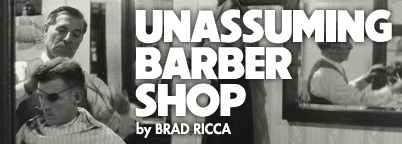
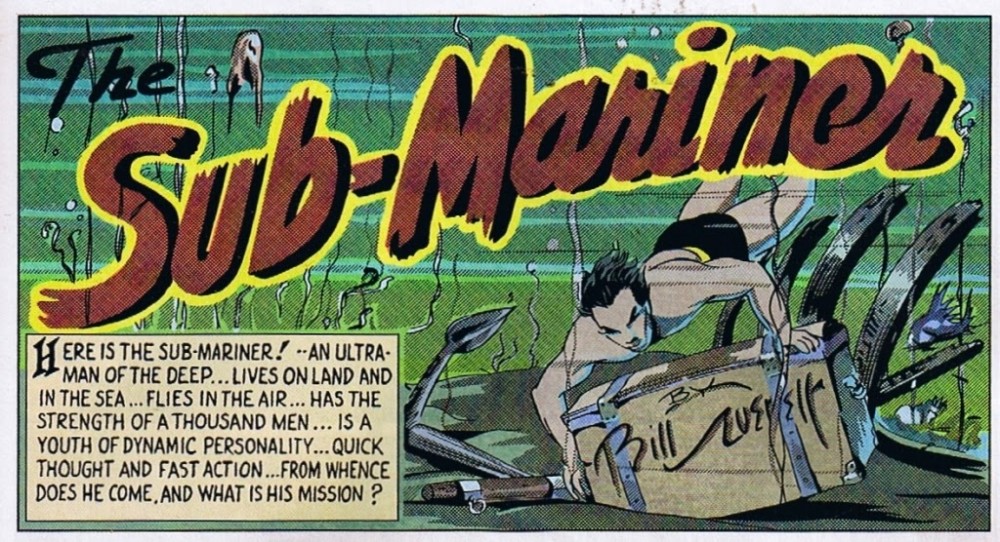
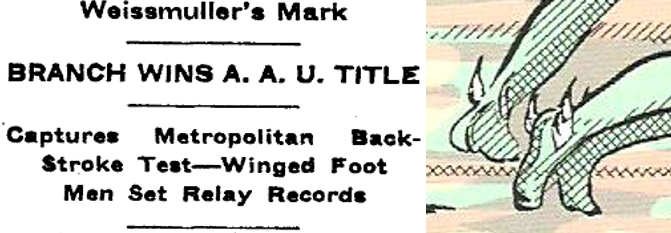
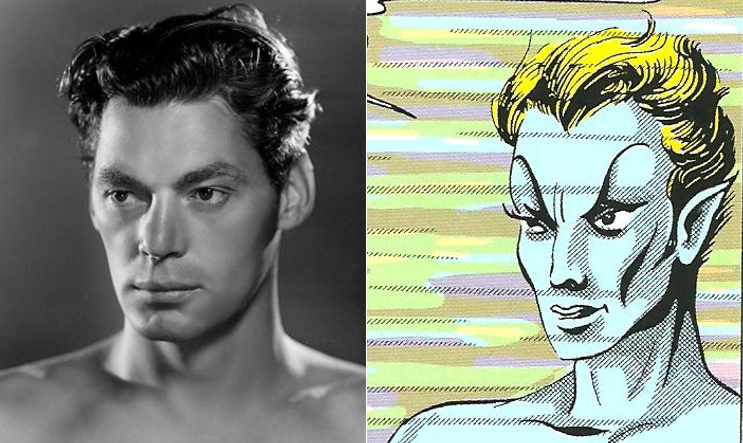
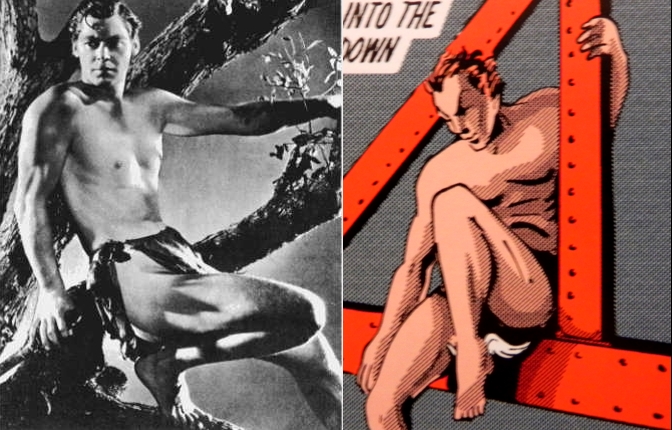
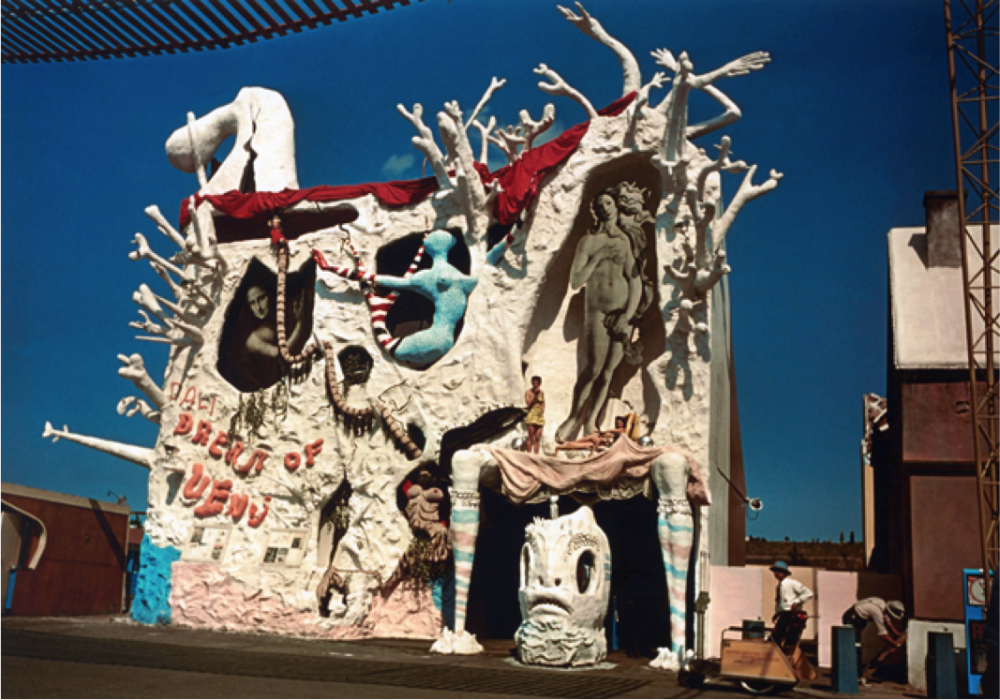
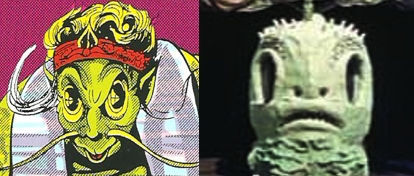
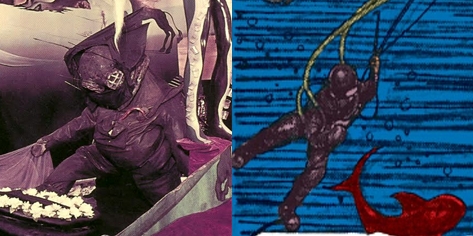
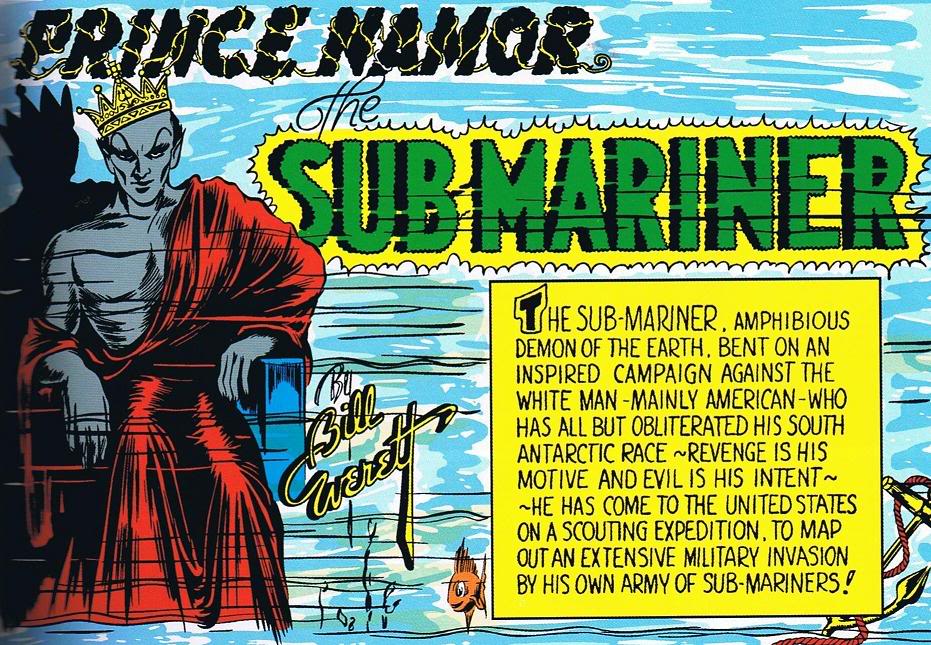
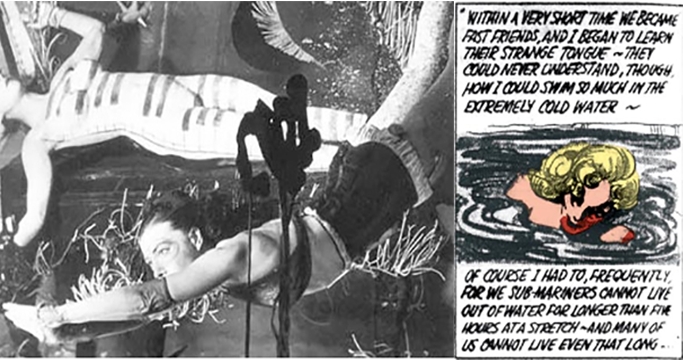
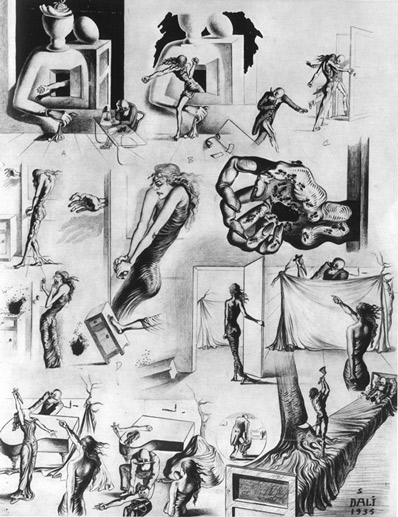
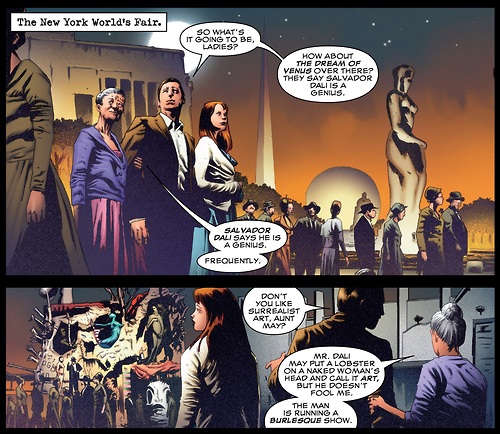
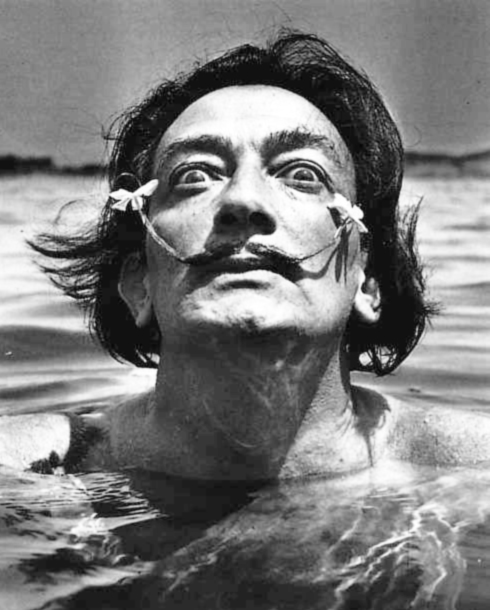



Don’t forget that Johnny Weissmuller swam for the USA at the Olympic Games in 1924 and 1928, winning several gold medals, so was already well known. He also played Adonis in a segment of “Glorifying the American Girl” in 1929 (or so Wikipedia tells me). All the more reason to think that Weissmuller = Namor holds up as a theory.
Another home run article!
The beat is firing on all cylinders.
Great piece. Thanks.
Amazing info on Johnny Weissmueller. The Winged Footmen is a great find! As for Dali’s exhibit at the World’s Fair … I wouldn’t think that was any inspiration for Namor’s origin story, since the Fair opened in May 1939, I believe. Namor’s first appearance was a few weeks to a month ahead of that date in Motion Picture Funnies Weekly #1. And of course, Everett would have had to done the work even earlier.
Thanks, Sandra. You are right about the tightness of the dates with the Fair. Still, there is some wriggle room: Everett himself dates one page 4/39, which is when the Fair opened. Roy Thomas also notes in DC Rarities that it is almost certain that Everett and Burgos visited the Fair. There is also anecdotal evidence from Everett’s daughter Wendy that her father could work very quickly — the first Torch-Sub-Mariner fight comic was done (allegedly) in a weekend. For more historical work on Everett and Subby, read anything by Blake Bell.
So when I was a kid, I used to get taken to the barbershop by my Dad. It was a very traditional place. There were thin combs in jars of fluid and charts of various hairstyles on the wall. When my brother finally got “The Crew-Cut,” he smiled for a month. As for me, every time I climbed into that big shiny chair, the only thing I was thinking about is what if the barber pulled a lever and I would DESCEND INTO A S.H.I.E.L.D. BUNKER . . . ON A SATURDAY.
(am I alone in this?)
Which is a long way of saying that me finding a single overlapping month or a bunch of detail loopholes here isn’t even close to being ironclad evidence. But it’s not supposed to be. The point of UBS is to be about the sticky places in-between the real world and comics that *might* have influenced each other. It’s not a Top 10 or a Listicle, it’s more of a wide-angle What-If? experiment written in a library. It’s different, I know (just read the “Batman Country” installments last summer), but it’s an approach that comics warrants, I think. We’ll see. Either way, thanks for reading and responding — the great part about “might” is that we can all debate if we believe it or not…
So I guess a “Top 10 Surprising Reasons ‘Unassuming Barber Shop’ is not a Listicle” slideshow isn’t in the works?
I didn’t have your imagination, but comics were why I didn’t mind going to the barber or tagging along with my mom at the hairdresser. I have this vague memory of working up the gumption to ask to take one home from the barber since I really needed it for my collection, but the one title that remains clear is from the hairdresser: an old issue of Elsie the Cow, whose secret origin I imagined to be closer to Dr. Moreau than anything in-continuity.
Coincidentally, Elsie artist Lily Renée Peters Phillips is up for an Eisner this year.
Alan Weiss told me that Subby’s face was based on Fred Astaire and in those early stories the shape of the face is identical.
Comments are closed.